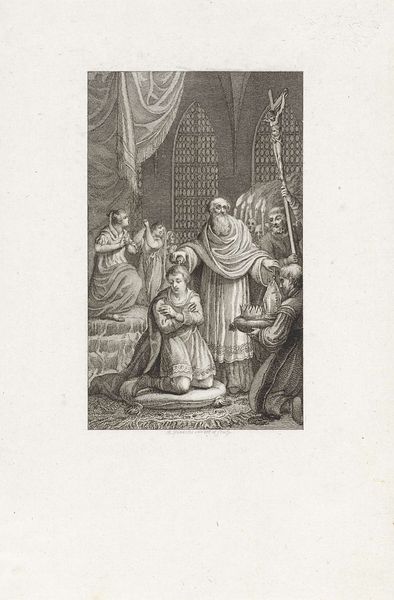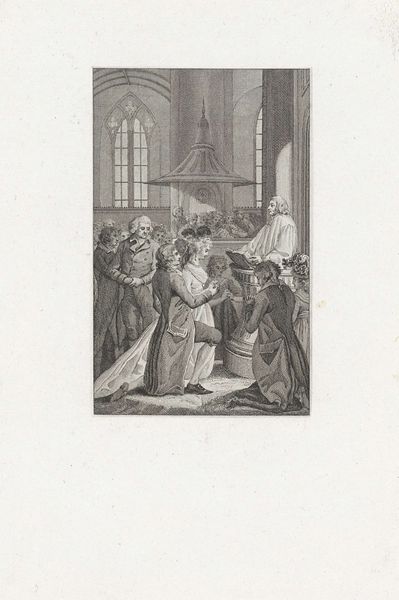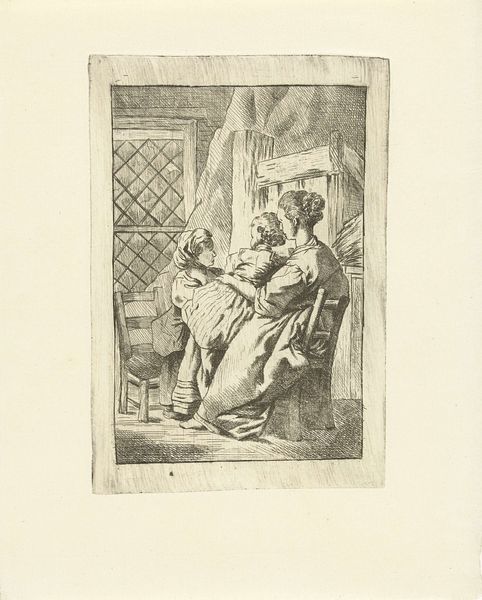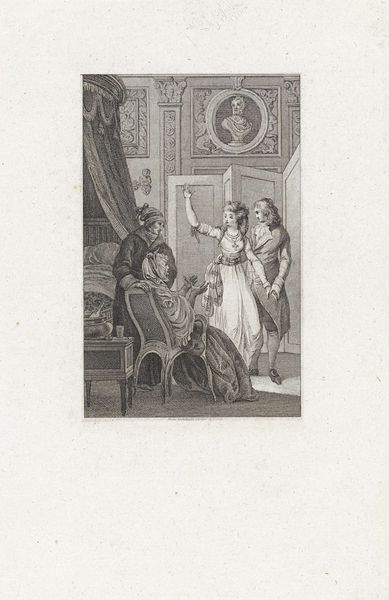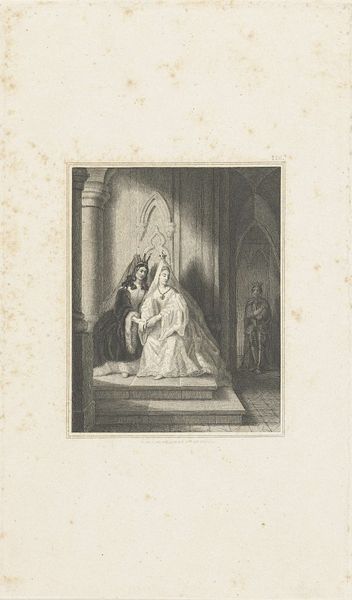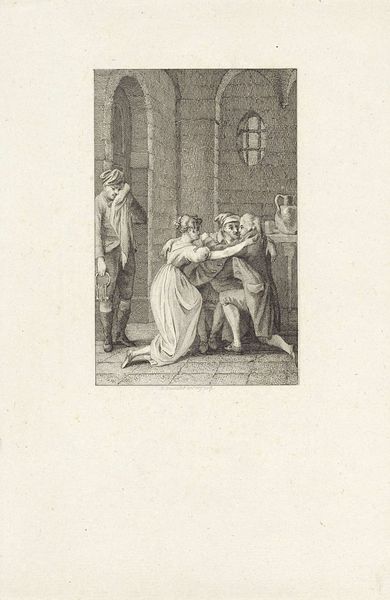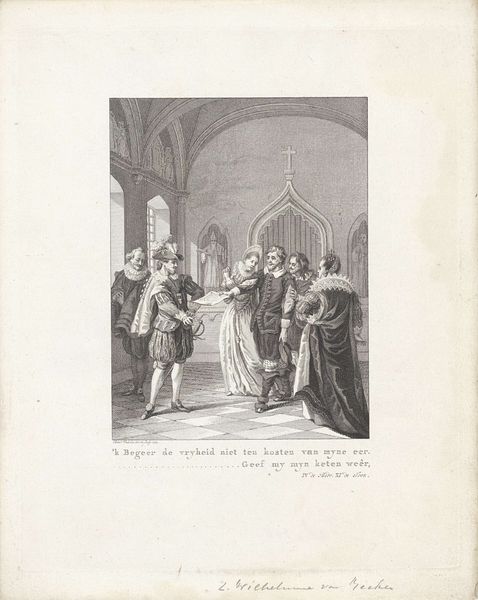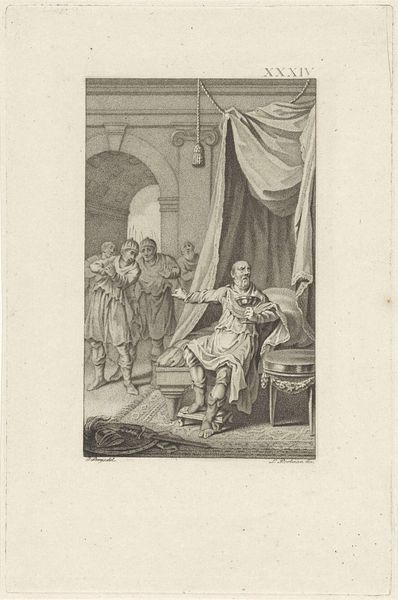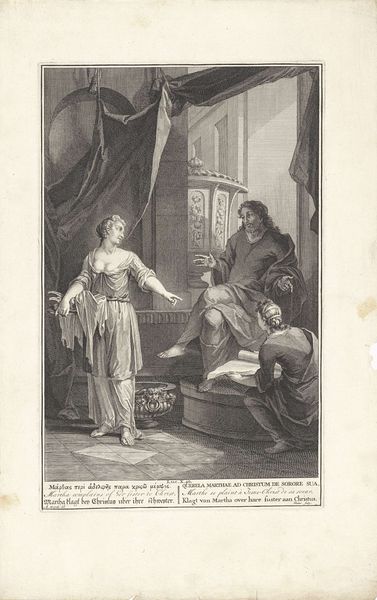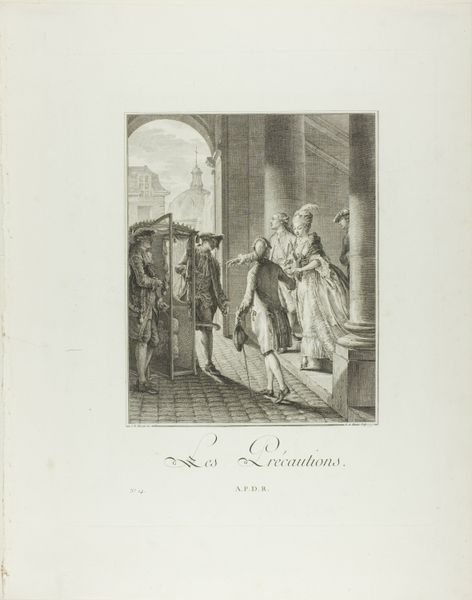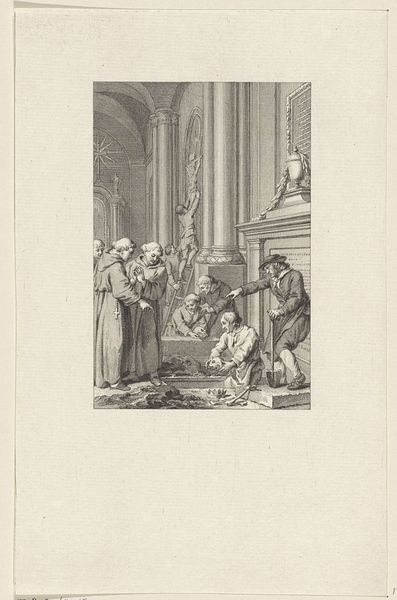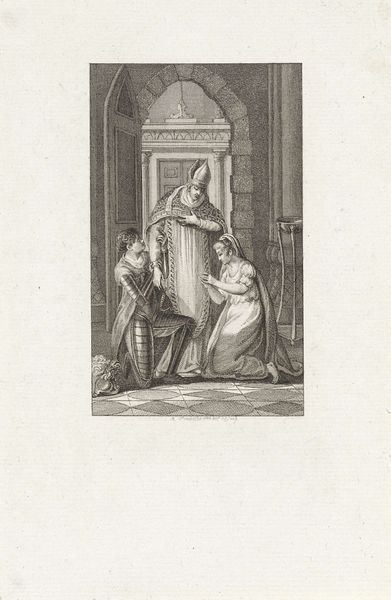
Dimensions: height 226 mm, width 156 mm
Copyright: Rijks Museum: Open Domain
Editor: So, here we have Reinier Vinkeles' 1784 engraving, "Selima visits Jedidia in prison." It’s quite dramatic, the way she’s gesturing, and he’s pleading. It makes me wonder what their story is. How do you interpret this work? Curator: Well, immediately, it speaks to the potent role of narrative art in the late 18th century. Prints like this circulated widely, shaping public opinion and morality. Look at the prison setting - that isn’t just a backdrop, but a statement about justice and power. Do you notice anything about their clothing? Editor: They're in what looks like classical robes… a little theatrical almost? Curator: Precisely! It elevates the subject, imbuing it with historical weight and encouraging viewers to see the scene as more than just a personal drama, but reflecting greater truths. This “theatricality”, as you noted, was incredibly popular and directly connected the print to performances staged in theaters. Consider how visual art contributed to creating or reinforcing public sentiment in the Netherlands during this period. Editor: So, the print wasn't just art for art’s sake; it was intended to have a social impact? Curator: Absolutely. It engaged viewers in discussions about virtue, justice, and the role of women. Ask yourself: what does Selima *represent* here? How would someone consuming this print in 1784 interpret the scene? How might that reading differ from ours today? Editor: I see what you mean. Thinking about who was looking at this print, and what they already believed, really changes the way I look at it. Thanks, I never really considered this type of art being connected to political theater! Curator: Indeed, art doesn't exist in a vacuum, but plays an important social and cultural role!
Comments
No comments
Be the first to comment and join the conversation on the ultimate creative platform.
